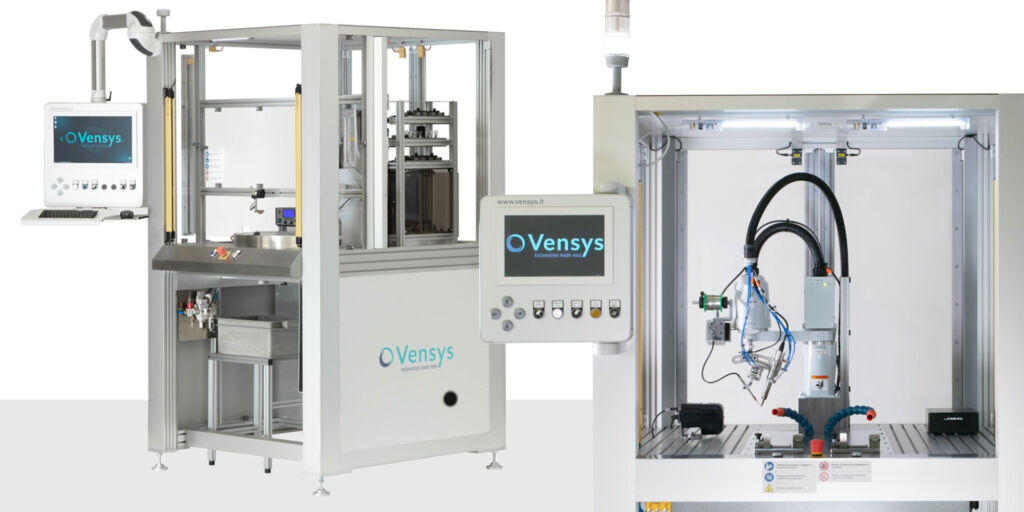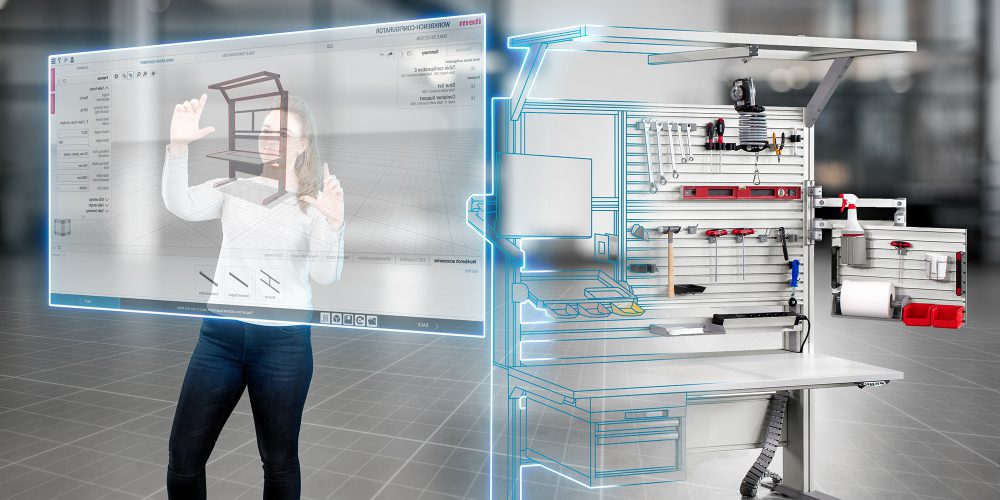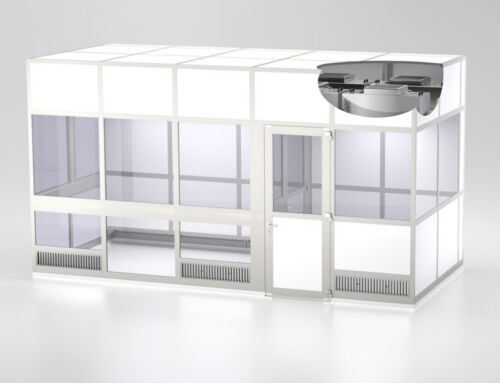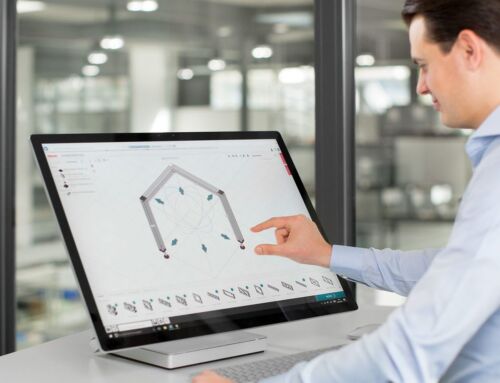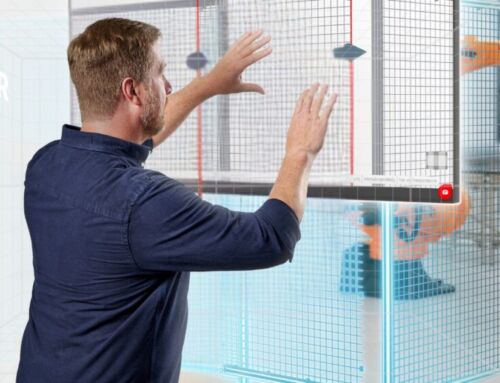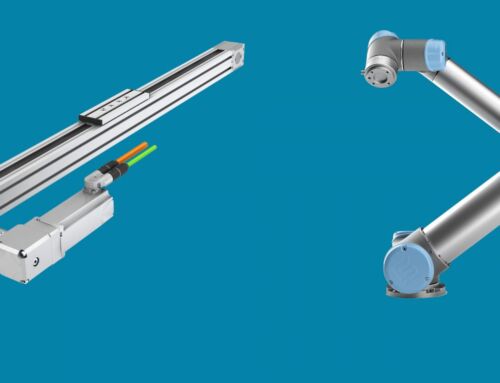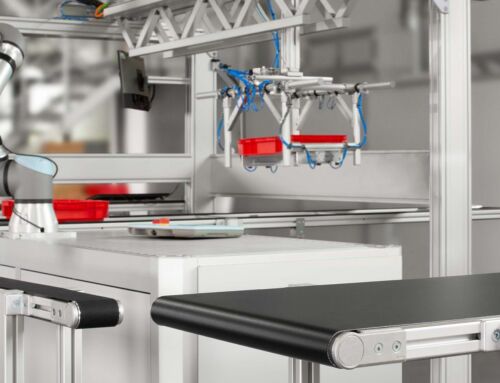Whether at home, at the work bench, in the office, or in a building such as a production facility, nearly everyone will have come into contact with ergonomics to some extent.
The growing importance of ergonomics can be illustrated by the following example. There is often a focus on sitting – and for good reason. In recent years, there has been increasing discussion around this topic, fueled by many studies on the subject and the idea that “sitting is the new smoking”. For one thing, whether at work or at home, spending prolonged periods sitting in one place is intrinsically unhealthy. When we sit for a long time, our metabolism slows down, increasing our risk of various conditions such as diabetes and obesity. What’s more, our muscles get weaker, which soon results in poor posture and frequently leads to musculoskeletal disorders (MSDs). As reported by the Bureau of Labor Statistics (BLS), MSDs accounted for 21.05 percent of days away from work in 2021. But what can be done to combat the issue? What makes and industrial or office chair “ergonomic?” How did ergonomics come about in the first place and what are its goals? Let’s explore.
Exploring Ergonomics in Industry
Download the free case study from item showing which ergonomic measures are already being used in manual production. Find out more and see how your company compares – how much progress have you made?
The definition: what “ergonomics” really means
The term “ergonomics” combines the Greek words “ergon” (work or labor) and “nomos” (natural laws). This provides an excellent starting point for a precise and specific definition – ergonomics is the science devoted to the laws of human labor, and its focus is on optimizing such work. Ergonomics generally involves an interdisciplinary approach, with experts from many different areas all contributing their knowledge of people and technology. Examples of these areas include not only engineering, occupational medicine and psychology, but also IT, since software ergonomics is also a discipline. Digitalization plays a part in user-friendly software design, but that’s not all – it is also an important aspect when it comes to evaluating manual assembly work benches. Software has been used for this purpose for quite some time now, including within the context of the MTM method, which is used to describe, analyze, evaluate and plan manual tasks. This applies, amongst other things, to the handling area, which is a perfect example for illustrating why taking each individual’s needs into account is so important.
An Overview: Environmental Ergonomics and Behavioral Ergonomics
There is one common distinction that is a useful aid for understanding the concept of ergonomics, namely the difference between the following:
In environmental ergonomics, the focus is on optimizing work equipment and the working environment. It therefore covers a wide range of options for optimizing working conditions. These include ergonomic work benches and chairs, material and tool supply, interlinking work benches, and lighting. When a work bench or product is described as “ergonomic”, this means its design has been based on the findings of ergonomics and that it safeguards the user’s health. For example, a chair from the ergonomic item Work Bench System is height-adjustable and features other options for adjusting it to suit the user. These options extend beyond those offered by an office chair, but follow the same principles. The same applies to corresponding height-adjustable work benches. This is all based on the knowledge that the work bench should adapt to the person – and not the other way round. Given the fact that each person is an individual, products need to make allowance for this and offer flexible adjustment options. This idea is central to ergonomic measures, whether in the office, in an assembly environment or elsewhere.
A height-adjustable bench or table is also an ideal solution that enables the user to switch regularly between sitting and standing. When working in an office or in industry, the 40-15-5 rule has proved very apt – that means sitting for 40 minutes, standing for 15 minutes and moving for 5 minutes. Equally, a flexibly adjustable chair supports dynamic sitting, enabling the user to change position as often as possible. Both these examples are associated with behavioral ergonomics, which focuses on correct ergonomic behavior in the workplace. There’s a lot more to it than simply providing employees with ergonomic work benches, so involving staff at an early stage and securing their acceptance is vital. Ergonomics consultant Susanne Weber particularly highlights the importance of this aspect when it comes to assembly work benches: “In industry, ergonomics works best when you have disseminators – a few specially selected employees whose awareness of the issue is increased through training and who then pass on the relevant information to their teams. A sustainable approach is vital here, and this means annual refresher courses for the disseminators.”
What are the goals of ergonomics?
There is still a common misconception that ergonomic measures to protect the workforce are an unnecessary expense. However, nothing could be further from the truth. In actual fact, since the primary objective of ergonomics is to create optimal working conditions, the company and the employees benefit in equal measure. “Besides reducing the number of sick days, ergonomic improvements almost always go hand in hand with process optimization, too,” explains Marius Geibel, who is an expert in ergonomics at item. In this context, one of the goals of ergonomics is also to boost productivity and reduce the costs associated with mistakes, occupational accidents and work-related illnesses. According to a report by the National Safety Council, these costs amounted to 163.9 billion dollars (USD) in 2020. Ergonomics is therefore also a preventive measure, aimed at protecting the workforce and saving avoidable costs.
Ergonomic design thus combines a sense of responsibility for the company’s employees with profitability in the best conceivable way. This should also be considered against the background of demographic change. While the proportion of employees between 15 and 44 years of age is declining (1990: 57%; 2020: 47%; forecast for 2050: 46%), the proportion of those aged 60 to 74 is clearly rising (1990: 17%; 2020: 24%; forecast for 2050: 27%). Use of ergonomic work benches offers benefits for both age groups – they particularly provide protection for older employees, while younger members of staff benefit from prevention at an early stage, meaning they are less likely to develop chronic MSDs. What’s more, while a company’s good image is not one of the main goals of ergonomics, it is nevertheless an attractive side benefit that should not be underestimated, especially in these times of skills shortages and the war for talent. “Companies now have to compete for staff. Ergonomics therefore plays a major role, too, since an ergonomic work bench is more attractive to employees,” explains Prof. Klaus Bengler, Chair of Ergonomics at the Technical University of Munich. The item ergonomics study identified the following reasons that support use of ergonomic work bench design in industry:
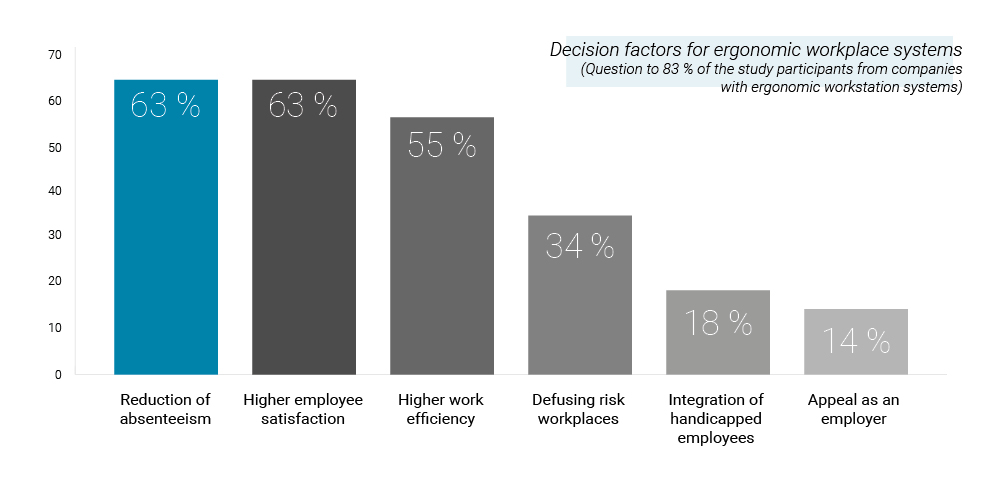
The history of ergonomics – important milestones
The additional context provided by the history of ergonomics is also useful for improving understanding of its significance and goals. A good place to start is with Bernardino Ramazzini (1633-1714). In his book entitled “De morbis artificum diatriba” (“Diseases of Workers”), which was published in 1700, the father of occupational medicine examined the links between certain professions and specific diseases. Even at that early stage, he identified the effects of poor posture on health. Ultimately, it was Polish academic Wojciech Jastrzębowski (1799-1882) who coined the phrase “ergonomics” (“ergonomji”). In 1858, he published his work “An Outline of Ergonomics, or the Science of Work based upon the truths drawn from the Science of Nature” in the “Nature and Industry” journal (both in Polish). Jastrzębowski defined ergonomics as follows: “Ergonomics is a scientific approach that aims to help us get the most out of life with minimum effort and maximum satisfaction for ourselves and the common good.”
In his definition, Jastrzębowski therefore identified two key aspects of ergonomics – efficiency (“minimum effort” should be understood here in the sense of maximum efficiency) and the benefits for both personal human well-being and the economy and/or society. However, it was not until almost a hundred years later that Jastrzębowski’s work received the attention it deserved. In the meantime, British psychologist K.F.H. Murrell (1908-1984) had been recognized as the initiator of ergonomics. Independently of Jastrzębowski, Murrell combined the words “ergon” and “nomos”. This was in 1949, at the time when a research group initially called the “Human Research Society” and later renamed the “Ergonomics Research Society” was being set up. The concept of ergonomics then became familiar worldwide through the specialist journal “Ergonomics”, which was published from 1957 onwards. Two years later, the International Ergonomics Association (IEA) was founded. Many national associations belong to its network, including the German Society for Labor Sciences (GfA), the predecessor organization of which was first established back in 1953. The theory of ergonomics and the practice of ergonomic measures are now well established.
Ergonomic Work Bench Design Expertise
Over the years, an extensive archive of knowledge about ergonomics has been built up on the item blog. Although the main focus is on the ergonomic design of assembly work benches, information about many fundamental principles is also included. Discover the expertise here:
Would you like to keep up-to-date with developments relating to ergonomics? Then we have the information for you! Simply subscribe to the item blog by completing the box at the top right.

